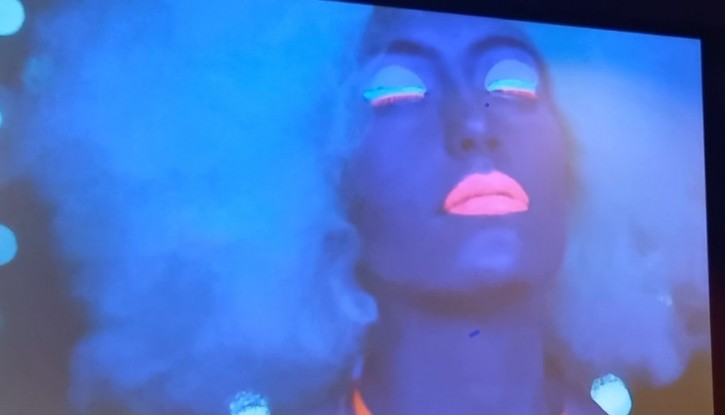3 scientific innovations in cosmetics personalisation: IFSCC exclusive

Here we share three exciting innovations in beauty personalisation...
Next level 3D-printed skin care masks
Dr Joana Marto from the University of Lisbon presented: “A step forward in personalising beauty: the effect of 3D-printed skincare masks’ design on hydration performance” to the audience of cosmetic scientists.
Marto started by discussing the importance of 3D printing technology to offer personalisation in beauty, before then outlining the recent study in this field, which investigated different designs for a 3D print a mask (a grid design, triangular design, and bricks design).
In the study, the team learned that they could modulate the release of the bioactive by changing the printing settings – and not just the formulation. By decreasing the distance between the lines in the mask design, the team could “increase the resistance” of the face mask and deliver different results.
Based on the study, Marto’s conclusions were:
- The mask’s internal geometry impacted the hydration efficacy, which could be linked to the skin occlusion degree induced by the design.
- It’s possible to modulate the hydration rate and control the trans-epidermal water loss (TEWL) by adjusting the skincare mask’s internal geometry.
- New insight into the practicality of 3D printing in producing personalised porous skin care masks that cater to the consumer’s specific skin needs, to offer next level of personalisation in skin care.
The team’s next steps will be to explore the influence of other internal designs on the hydration performance using Confocal Raman Spectroscopy technology.
Re-categorising skin type based on microbiome
“We are made up of 100 trillion bacteria cells and only 20 trillion human cells,” shared Dr Elsa Jungman from HelloBiome, ELSI Skin Health, as she presented her new study: “Redefining the skin type: microbiomebased segmentation for efficient product development and personalisation.”
According to Dr Jungman, ‘balanced’ skin has 70% Cutibacterium acnes, which means it’s not actually ‘balanced’ at all. While ‘disrupted’ skin is technically more balanced in terms of having more equal amounts of certain bacteria.
For the study, 300 participants (mainly women, many who said they had ‘sensitive’ skin) were asked to give a self-assessment of their skin type and outline which products they used before taking a self-sample of bacteria on their forehead using an at-home microbiome kit.
The study focused on over 5K species of bacteria and fungi and detected 20 times more bacteria than fungi on forehead skin.
It found that the younger demographic (aged 30 or under) who reported having oily skin and acne had a high abundance of the bacteria Cutibacterium acnes.
Whereas those with dryer and more ‘sensitive’ skin, only had about 50% c acnes bacteria. Instead, these participants had more Corynebacterium kroppenstedtii, with a generally more diverse bacterium.
Based on this, the team developed a microbiome score scale: ‘disruptive, bad, good, beneficial’, which decreased with lower levels of c acnes bacteria as this type of bacteria decreases with age.
Based on the study, Jungman’s conclusions were:
- Microbiome data can be incorporated as a standardised measurement approach alongside self-reported information to enhance our understanding of skin condition in a more objective manner.
- Cutibacterium acnes bacteria had significance in driving microbial shifts in the skin microbiome and underscoring the overall importance of C. acnes on the skin.
- A high abundance of C acnes was often found to have increased incidence of self-reported skin concerns like acne. This was also shown through the microbiome scores.
- The study also identified a cluster of people with skin that was dominated by Corynebacterium kroppenstedtii bacteria, which appeared to be associated with dry and sensitive skin types.
“Although each participant carries unique microbiome characteristics, we show that microbiome sequencing data can be effectively clustered to reveal novel insights to different skin types that could enable more efficient and effective personalisation of skin care regimens and product development,” Jungman concluded.
3D projected makeup try-on: Mixed Reality concept
In “Rediscovering your own beauty through 3D digital makeup system based on projection mapping technology”, Nao Tsurumi from KOSE Corporation outlined the company’s latest work on its Mixed Reality technology, as a more realistic and less time-consuming way for consumers to try on cosmetics.
Tsurumi highlighted that self-expression is increasingly important to beauty consumers and revealed that KOSE had explored projection mapping technology as a “step up from Augmented Reality (AR).”
She that the company faced two issues that needed to be overcome to make this technology a viable alternative to AR or in-real-life (IRL) cosmetics try-on. The first was that the face must stay still for the technology to work correctly, the second was that colour correctness could also be an issue due to skin reflection.
To undertake the study to explore this technology as a new avenue for cosmetics try-on, the team used a 1000 fps projector, 500 fps camera, a hot mirror and LED light. It used infrared light for sensing and set up the camera and projector in the same optical axis without any interference for the projection.
Tsurumi also outlined the tracking process: which captured the image, then used face location detection (which she said was the longest part of the process), followed by face landmark detection and 3D shape prediction and then combined this with the makeup texture image to project the makeup.
Colour reproduction was the other difficulty. For this, KOSE shared that it had used a physics-based calculation.
Tsurumi said that after much investigation, the team had been able to create good results with no delay: with <6ms latency for free movement; as well as accurate makeup colour reproduction regardless of skin tone.
She said that KOSE asked 100 Japanese women how realistic the projection makeup was, and they all gave a high score.
Tsurumi concluded that any makeup product could be represented by this system.






















